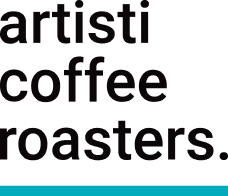Whether your making coffee at home, or in a café, one thing is for sure – the temperature of your milk is crucial. Having a thermometer ensures you can be consistent and accurate with your milk temperatures. However, if your thermometer is not calibrated, it may be showing a misreading and really setting you up for failure.
Digital thermometer or analogue thermometer? Which is better for a barista?
When it comes to price, analogue thermometers are a much cheaper option ranging from around $5 - $10. Compare that to a digital thermometer that could cost you anywhere from $20 up to over $100. If you’re comparing them for reading the temperature, the digital thermometers are far more accurate and will give you a reading much faster than an analogue thermometer. Knowing this, you would assume that a digital thermometer is best then.. not exactly when it comes to heating milk for coffee. The fact that you can see the pin moving on an analogue thermometer means that you can gauge how quickly your milk is heating, and therefore easily judge when is the best time to stop heating your milk. Note that digital thermometers are prone to flipping over, making them harder to read.
What is the best temperature of milk in a coffee?
65 degrees is the optimal temperature for milk to be heated to when preparing modern, specialty coffee. This is an industry standard temperature for baristas, customers have become accustomed to this temperature, it does not have any negative effects on the taste of the coffee and barista thermometers show this as the optimal temperature.
When should I stop heating my milk?
It’s important to know that your milk will continue to rise in temperature, even when you’ve turned off the steam wand. As a guide, we aim to stop 5 degrees before the desired temperature eg. Stop at 60 degrees to achieve 65 degree milk. How fast your milk is heating up will dictate when you should stop heating your milk. This is why it is more helpful to use an analogue thermometer than a digital thermometer for coffee. The moving pin on the analogue thermometer helps you gauge how fast your milk is heating up, and therefore when you should stop heating your milk.
How do I use my hands to gauge when to stop heating my milk?
A sign of a great barista is how well they know their equipment and how that effects the coffee they make. Much like knowing when to stop heating your milk based on the pin on the thermometer, it’s about knowing when to stop heating your milk based on the temperature of the jug. As a general rule, from the moment you can no longer hold the jug with your whole hand, you begin to count and turn the steam off at 5 seconds. Just be sure to use the palm of your hand and not your fingers as your fingers are less sensitive and are less accurate. This time varies depending on the speed in which your milk is heating. On a home machine, you can could to five once you can’t hold the jug. On a commercial machine, this may be more like 3 seconds. A variable that will greatly effect this timing is how much milk you are heating. Heating 200ml of milk will be much quicker than heating 600ml of milk. The best way to test this is to practice counting while looking at your thermometer so you don’t under or over heat your milk.
How to calibrate an analogue thermometer.
To accurately calibrate an analogue thermometer, you will need a digital thermometer so you can calibrate to exact temperatures. If you don’t have a thermometer, you an use a glass of cold, icy water which is roughly 4 degrees and the boiling water from your coffee machine will be roughly 90 degrees.
Calibrating an analogue thermometer for cold temperatures.
Step 1. Place your thermometer in the glass of iced water
Step 2. Read the thermometer, if it is not reading at 4 degrees, it requires calibrating
Step 3. Using a shifter, turn the nut on the underside of the thermometer to move the needle clockwise or anti-clockwise, depending on which way your gauge was incorrect.
Step 4. Repeat steps 1, 2 & 3 until the reading is correct.
Test your analogue thermometer with hot water.
Place a thermometer in a cup of boiling water from your coffee machine which should be around 90 degrees. Check that it is reading correctly and adjust as above, as required.
What are the best thermometers for home or commercial baristas?
A robust thermometer with coffee specific markings like the Rhino Analogue Thermometer are the best for steaming & frothing milk for coffee.
If you’ve got any questions, we’d love to hear them in the comments below.













Great information. I will definitely calibrate my thermometer. Thank you and I love this video.